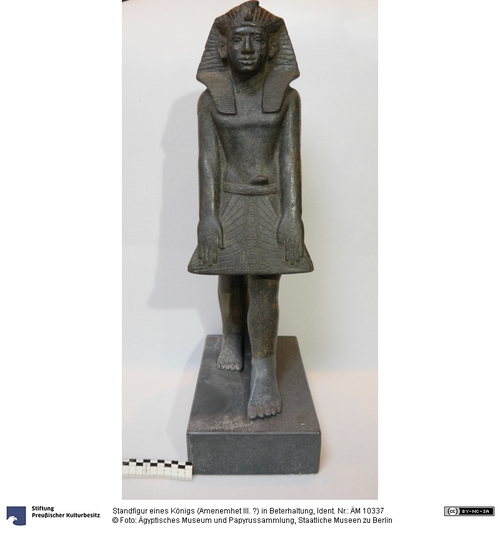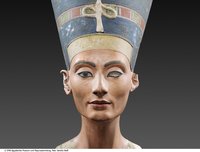Pharao ist der Mittler zwischen Menschen und Götter und daher offiziell der Hohepriester eines jeden Tempels. Da er nicht in allen Tempel gleichzeitig anwesend sein kann, wird er durch seine Statuen repräsentiert. Diese zeigen ihn häufig in der charakteristischen Beterhaltung mit flach auf den Schurz gelegten Händen. Amenemhet III. erscheint im traditionellen Königsgewand mit Nemes-Kopftuch und Uräusschlange. Er war ein bedeutender König des Mittleren Reiches und setzte sich sehr für die wirtschaftliche Stabilität Ägyptens und das Wohlbefinden seiner Untertanen ein.
en

